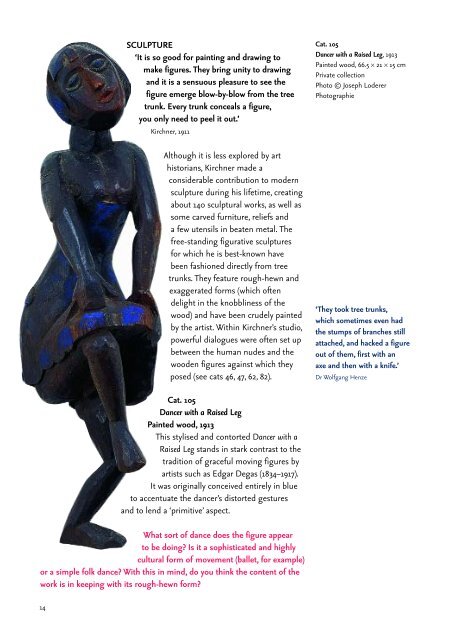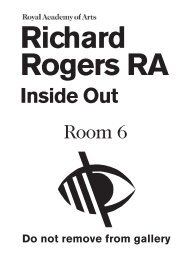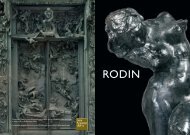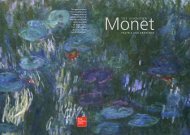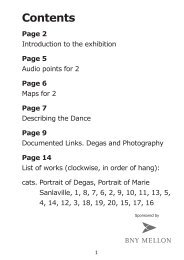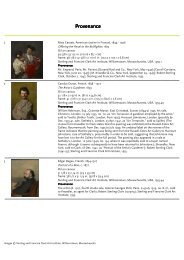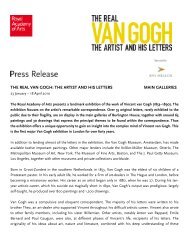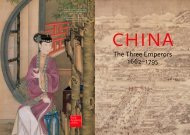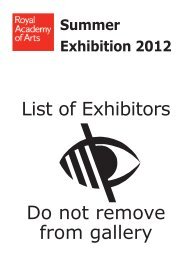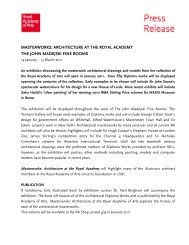KIRCHNER - Royal Academy of Arts
KIRCHNER - Royal Academy of Arts
KIRCHNER - Royal Academy of Arts
You also want an ePaper? Increase the reach of your titles
YUMPU automatically turns print PDFs into web optimized ePapers that Google loves.
14<br />
SCULPTURE<br />
‘It is so good for painting and drawing to<br />
make figures. They bring unity to drawing<br />
and it is a sensuous pleasure to see the<br />
figure emerge blow-by-blow from the tree<br />
trunk. Every trunk conceals a figure,<br />
you only need to peel it out.’<br />
Kirchner, 1911<br />
Although it is less explored by art<br />
historians, Kirchner made a<br />
considerable contribution to modern<br />
sculpture during his lifetime, creating<br />
about 140 sculptural works, as well as<br />
some carved furniture, reliefs and<br />
a few utensils in beaten metal. The<br />
free-standing figurative sculptures<br />
for which he is best-known have<br />
been fashioned directly from tree<br />
trunks. They feature rough-hewn and<br />
exaggerated forms (which <strong>of</strong>ten<br />
delight in the knobbliness <strong>of</strong> the<br />
wood) and have been crudely painted<br />
by the artist. Within Kirchner’s studio,<br />
powerful dialogues were <strong>of</strong>ten set up<br />
between the human nudes and the<br />
wooden figures against which they<br />
posed (see cats 46, 47, 62, 82).<br />
Cat. 105<br />
Dancer with a Raised Leg<br />
Painted wood, 1913<br />
This stylised and contorted Dancer with a<br />
Raised Leg stands in stark contrast to the<br />
tradition <strong>of</strong> graceful moving figures by<br />
artists such as Edgar Degas (1834–1917).<br />
It was originally conceived entirely in blue<br />
to accentuate the dancer’s distorted gestures<br />
and to lend a ‘primitive’ aspect.<br />
What sort <strong>of</strong> dance does the figure appear<br />
to be doing? Is it a sophisticated and highly<br />
cultural form <strong>of</strong> movement (ballet, for example)<br />
or a simple folk dance? With this in mind, do you think the content <strong>of</strong> the<br />
work is in keeping with its rough-hewn form?<br />
Cat. 105<br />
Dancer with a Raised Leg, 1913<br />
Painted wood, 66.5 × 21 × 15 cm<br />
Private collection<br />
Photo © Joseph Loderer<br />
Photographie<br />
‘They took tree trunks,<br />
which sometimes even had<br />
the stumps <strong>of</strong> branches still<br />
attached, and hacked a figure<br />
out <strong>of</strong> them, first with an<br />
axe and then with a knife.’<br />
Dr Wolfgang Henze


